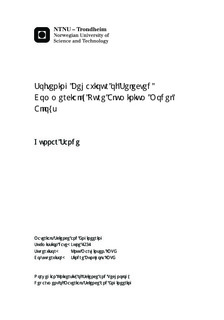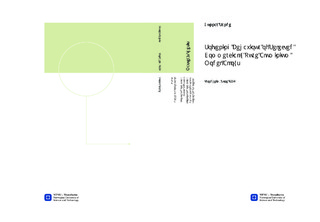| dc.contributor.advisor | Marthinsen, Knut | nb_NO |
| dc.contributor.advisor | Bunkholt, Sindre | nb_NO |
| dc.contributor.author | Sande, Gunnar | nb_NO |
| dc.date.accessioned | 2014-12-19T13:26:25Z | |
| dc.date.available | 2014-12-19T13:26:25Z | |
| dc.date.created | 2012-11-08 | nb_NO |
| dc.date.issued | 2012 | nb_NO |
| dc.identifier | 566355 | nb_NO |
| dc.identifier | ntnudaim:7269 | nb_NO |
| dc.identifier.uri | http://hdl.handle.net/11250/249078 | |
| dc.description.abstract | A characterization of the softening behaviour of four different commercially pure aluminium alloys has been carried out. The work is related to the MOREAL project (Modelling towards value-added recycling friendly aluminium alloys), where the main goal is to quantify the effect of the elements in recyclable aluminium alloys on microstructure and mechanical properties during thermo-mechanical processing. Typical elements are iron (Fe), silicon (Si) and manganese (Mn), and the alloys studied in this work contain Fe and Si with different amount and ratio: alloy A1 with 0.15 wt% Fe and 0.05 wt% Si; alloy A2 with 0.15 wt% Fe and 0.15 wt% Si; alloy B1 with 0.5 wt% Fe and 0.05 wt% Si and alloy B2 with 0.5 wt% Fe and 0.15 wt% Si.The as-cast material of all four alloys were homogenized at 600 °C for 24 hours followed by a cooling sequence to 450 °C, implying a total dwell time of 160 hours. The alloys were then cold rolled to a strain of 2.6 and isothermally annealed at temperatures from 275 °C to 375 °C, and the physical and mechanical properties were followed with electrical conductivity and hardness measurements. The microstructure and texture has been investigated with electron backscattering diffraction (EBSD) in scanning electron microscope (SEM), optical light microscopy and orientation distribution functions (ODF) from X-ray diffraction. Alloy A1 and A2 where fully recrystallzed after 10 000 seconds when isothermally annealed at 300 °C. Alloy B1 and B2 are slightly faster to reach the fully recrystallized state than alloy A1 and A2. The decrease in mechanical properties during softening was nearly linear on a logarithmic time scale, especially for alloy B1 and B2, with the onset of recrystallization difficult to seperate from the recovery. Electrical conductivity measurements showed that there was minimal concurrent precipitation. Images of the microstructure of the samples annealed at 275 °C show a long recovery phase followed by recrystallization. Particle stimulated nucleation (PSN) sites seems to be an important nucleation mechanism as it is found that the initial grain size have little effect on the softening kinetics, indicating that nucleation on old grain boundaries is of little importance. The recrystallization texture is weak with the typical Cube orientation slightly rotated around the normal direction. The recrystallized grain size was found to be smaller in alloy B1 and B2 (16-20 μm) than in alloy A1 and A2 (21-27 μm), most likely due to more PSN sites in these alloys. The grain growth that followed after recrystallization was found to be slightly larger for alloy A1 and A2 than alloy B1 and B2, most likely due to the effect from solute drag. | nb_NO |
| dc.language | eng | nb_NO |
| dc.publisher | Institutt for materialteknologi | nb_NO |
| dc.subject | ntnudaim:7269 | no_NO |
| dc.subject | MTMT Materialteknologi | no_NO |
| dc.subject | Materialutvikling og -bruk | no_NO |
| dc.title | Softening Behaviour of Selected Commercially Pure Aluminium Model Alloys | nb_NO |
| dc.type | Master thesis | nb_NO |
| dc.source.pagenumber | 75 | nb_NO |
| dc.contributor.department | Norges teknisk-naturvitenskapelige universitet, Fakultet for naturvitenskap og teknologi, Institutt for materialteknologi | nb_NO |

